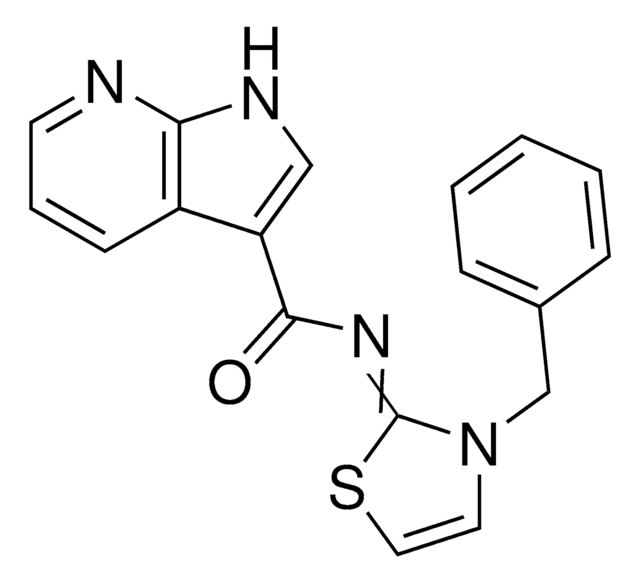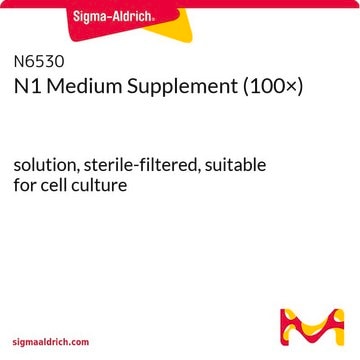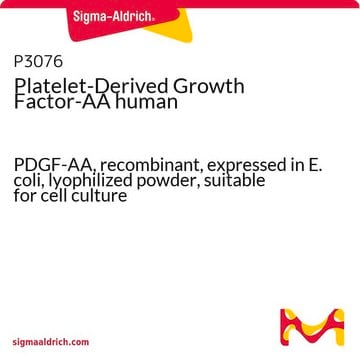Recommended Products
description
Intended to be supplemented with G0800.
sterility
sterile; sterile-filtered
form
liquid
concentration
1X
shipped in
ambient
storage temp.
2-8°C
General description
NeuralQ Basal Medium (1X) is a basal medium optimized for maximum growth and survival of primary and iPSC-derived neural cells in culture. Intended to be supplemented with the serum-free GS21™ Neural Supplement (G0800) along with other standard neuronal growth factor supplements, NeuralQ Basal Medium shows superior performance in supporting overall cell health and viability of neurons during short and long-term cell culture compared to a leading competitor′s product offering.
Application
Basal medium for maximum growth and survival of primary and iPS-derived neurons in culture.
Preparation Note
1. Dilute 2mL of G0800 GS21 Supplement (50X) in 100mL of N3100 NeuralQ Basal Medium.
2. For primary cortical neuron cultures, supplement with 0.5mM dipeptide glutamine (A8185) before
use.
3. Once combined with media, store at 2°C to 8°C in the dark for up to 4 weeks.
2. For primary cortical neuron cultures, supplement with 0.5mM dipeptide glutamine (A8185) before
use.
3. Once combined with media, store at 2°C to 8°C in the dark for up to 4 weeks.
Legal Information
GS21 is a trademark of GlobalStem
NeuralQ is a trademark of GlobalStem
related product
Product No.
Description
Pricing
Storage Class Code
10 - Combustible liquids
WGK
WGK 3
Flash Point(F)
Not applicable
Flash Point(C)
Not applicable
Certificates of Analysis (COA)
Search for Certificates of Analysis (COA) by entering the products Lot/Batch Number. Lot and Batch Numbers can be found on a product’s label following the words ‘Lot’ or ‘Batch’.
Already Own This Product?
Find documentation for the products that you have recently purchased in the Document Library.
Annabelle Biscans et al.
Molecular therapy : the journal of the American Society of Gene Therapy, 26(6), 1520-1528 (2018-04-28)
Small extracellular vesicles (sEVs) show promise as natural nano-devices for delivery of therapeutic RNA, but efficient loading of therapeutic RNA remains a challenge. We have recently shown that the attachment of cholesterol to small interfering RNAs (siRNAs) enables efficient and
Our team of scientists has experience in all areas of research including Life Science, Material Science, Chemical Synthesis, Chromatography, Analytical and many others.
Contact Technical Service







